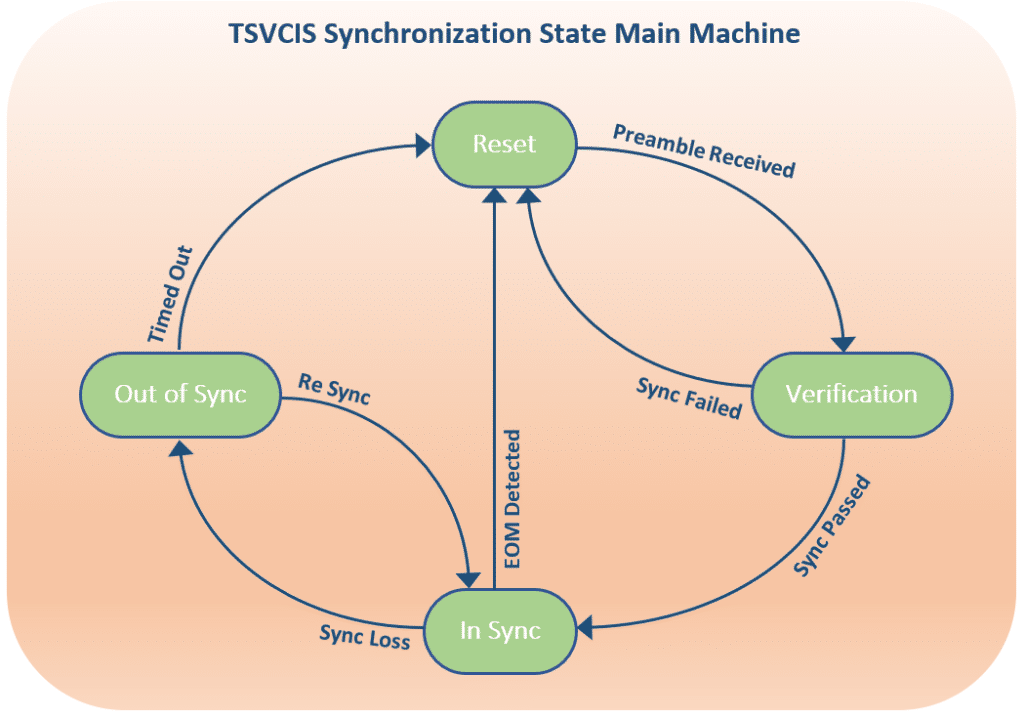TSVCIS MELPe Synchronization
Tactical Secure Voice Cryptographic Interoperability Specification (TSVCIS) documents the requirements for over-the-air voice communications across Narrowband (NB) and Wideband (WB) Waveforms. Beyond ensuring interoperability between devices, this specification utilizes cryptography, forward error correction, and synchronization techniques to establish a reliably secure communication channel. Both NB and WB waveforms utilize the Enhanced Mixed Excitation Linear Predictive (MELPe) based on STANAG 4591.
TSVCIS has establish a synchronization rules for the waveform to quickly establish sync and to indicate end of transmission. For Narrowband Voice Modes, when the Push-to-Talk (PTT) is enabled on a transmitter, a preamble bit sequence consisting of an alternating bit sequence, a pseudorandom noise framing sequence, and a crypto message word. This is followed by a sync verification field directly before the transmission of the MELPe encoded data. Once considered in the synchronized state, synchronization is continuously verified using the MELPe sync bit, which alternates between 0 and 1 from frame to frame. When PTT is released, two successive End-of-Message (EOM) frames are sent in place of MELPe data to indicate to the receiver that transmission has ended. The image below shows the state diagram of the TSVCIS receiver.
The structure of the synchronization mechanism for Wideband Voice Modes is very similar to the NB Voice Modes. One main difference is the WB mode has a separate Late Network preamble, which does not require the receiver to be in full reset mode.
Platforms
VOCAL Technologies, Ltd. TSVCIS software includes synchronization verification and EOM frame generation for transmission, and sync frame verification, continuous sync verification and EOM detection of the received data. Please contact us to learn more about our TSVCIS and RoIP software solutions.
| Processors | Operating Systems |
|---|---|
|
|
VOCAL Technologies, Ltd. TSVCIS software includes synchronization verification and EOM frame generation for transmission, and sync frame verification, continuous sync verification and EOM detection of the received data. Please contact us to learn more about our TSVCIS and RoIP software solutions.
